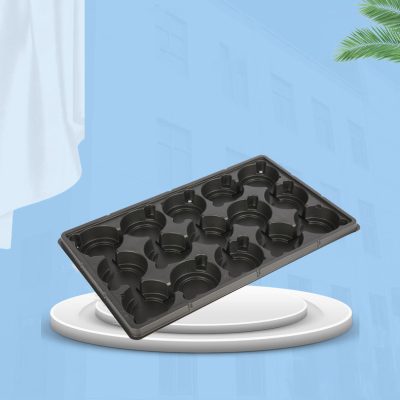Plant trays are valuable tools that can be utilized at various stages of gardening, from propagation to harvest. Here’s a comprehensive guide on how to make the most of plant trays in your garden:
Propagation Stage:
- Seed Starting: Fill the compartments of the plant tray with a seed-starting mix and sow your seeds according to the recommended depth and spacing. Place the tray in a warm and well-lit area to encourage germination.
- Cuttings: Use a plant tray with compartments to propagate plants from stem or leaf cuttings. Fill each compartment with a rooting medium, insert the cuttings, and provide appropriate conditions for rooting.
- Transplanting Seedlings: Once your seedlings have grown, you can transplant them into larger containers or directly into the garden. Remove the seedlings from the plant tray by gently pushing them up from the bottom of the compartments to avoid damaging the delicate roots.
Growing Stage: 4. Organized Planting: Plant trays with compartments help you keep your garden organized by providing a designated space for each plant. This is particularly useful for small or compact varieties that require individual attention.
- Microgreens and Baby Greens: Utilize plant trays for growing microgreens and baby greens. Sow the seeds densely in the compartments and harvest the tender shoots when they reach the desired size.
- Intensive Planting: Plant trays can be used for intensive planting techniques, such as square foot gardening. Fill each compartment with soil and plant according to the recommended spacing for the specific crop.
Maintenance Stage: 7. Watering Efficiency: Plant trays with drainage holes make watering more efficient. Ensure proper watering by filling the bottom tray with water and allowing the plants to absorb moisture from below. This helps prevent overwatering and allows plants to develop deep root systems.
- Nutrient Management: Plant trays provide a controlled environment for applying liquid fertilizers or foliar feeding. Dilute the fertilizer according to the package instructions and apply it directly to the soil or foliage of the plants.
Harvest Stage: 9. Harvesting and Sorting: When it’s time to harvest your crops, plant trays make it easier to collect and sort the produce. Gently remove the plants from the compartments, clean them if necessary, and arrange the harvested items neatly in the tray.
- Drying and Curing: Use plant trays for drying herbs, flowers, or seeds. Place the harvested material in a single layer on the tray and allow it to dry in a well-ventilated area. This promotes air circulation and prevents mold or mildew.
- Seed Saving: Plant trays can be used for seed-saving purposes. Allow the plants to mature and produce seeds in the trays, then collect and store the seeds in labeled envelopes or containers.
Remember to clean and sanitize your plant trays between uses to prevent the spread of diseases and pests. Regularly monitor your plants for any signs of stress or issues and make adjustments as needed. By utilizing plant trays throughout the gardening process, you can maximize efficiency, organization, and overall success in your garden.








